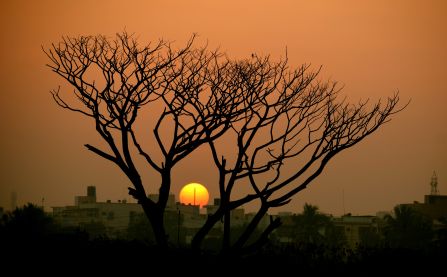Landscaping the circular economy in Kenya and India
| Date |
Date
|
Over the last decade, India and Kenya have witnessed exceptional economic performance with an average annual growth of 7% and 5% respectively. If this tendency continues, India could become the fourth-largest economy in the world in about two decades, and Kenya will strengthen its role as the largest economy in eastern Africa. However, as economic growth flourishes, India and Kenya are on the track of an industrialization path similar to the developed countries, which includes the associated negative externalities it entails. In this sense India and Kenya are at a point where systemic choices have to be taken to create the right conditions to facilitate their transition towards sustainable development.
The Circular Economy Catalyst has developed a Circular Economy Country Profile for India and Kenya. The objective is to bring together an overview of opportunities and challenges around the circular economy and the key players shaping and transforming the economic sectors through innovative and sustainable business models.
The country profiles cover four (4) pillars of the circular economy ecosystem in Kenya and India. The first section is focused on the economic structure and trends. SMEs' contribution to the GDP of India and Kenya represent 35% and 30% respectively. SMEs also employ more than 80% of the working population of Kenya and are the second largest employer in India. Furthermore, services (47.6%), Industry (25.8%) and agriculture (16.7%) are the main contributors to India's GDP, while services (53%), agriculture (36%), and industry (17.4%) are the main contributors to Kenya's GDP.

The second pillar focuses on sector analysis. Although there is significant growth and improvement in the economic conditions, the economic structures of India and Kenya are highly vulnerable to climate change. This situation offers a wide range of opportunities and possibilities for new products and business models. In the case of Kenya, circular economy enterprises are active in sectors such as Smart & Regenerative Agriculture, Green building, Waste management, plant and insect-based proteins, digitalisation and the textile industry. In the case of India, enterprises are targeting topics such as sharing as a service, fashion & clothing, agriculture, mobility, sustainable construction sector and rare earth metals.
In the third part, the country profile focuses on movements towards a circular economy at the political level. As much as a circular economy is an emerging concept in Kenya and India, it has been identified as a key area of transformational impact. In this sense, Kenya and India have achieved significant progress in policy development. Kenya Vision 2030 and the India National environmental policy are some examples of relevant frameworks promoting a circular economy approach in Kenya and India.
Lastly, we explore the support movements to the circular economy. Although both nations have developed a strong financial and non-financial ecosystem, most of the time, this "support" is designed and focused on supporting traditional business models. Circular economy business models in Kenya and India still face many challenges such as the lack of access to adequate capital, limited market access, poor infrastructure, inadequate knowledge & skills, and rapid changes in technology. In this sense, both, financial and non-financial support integrated by banks, organizations, incubators, accelerators, and research hubs are fundamental actors in constraining or supporting circular economic enterprises in India and Kenya.
The Circular Economy Country Profile for Kenya and India is an effort to better understand the current status of the circular economy sector in both nations and allow to identify challenges and opportunities to better implement the Circular Economy Catalyst.
Read the documents to find out more:
Kenya Circular Economy Landscape Map
India Circular Economy Landscape Map
